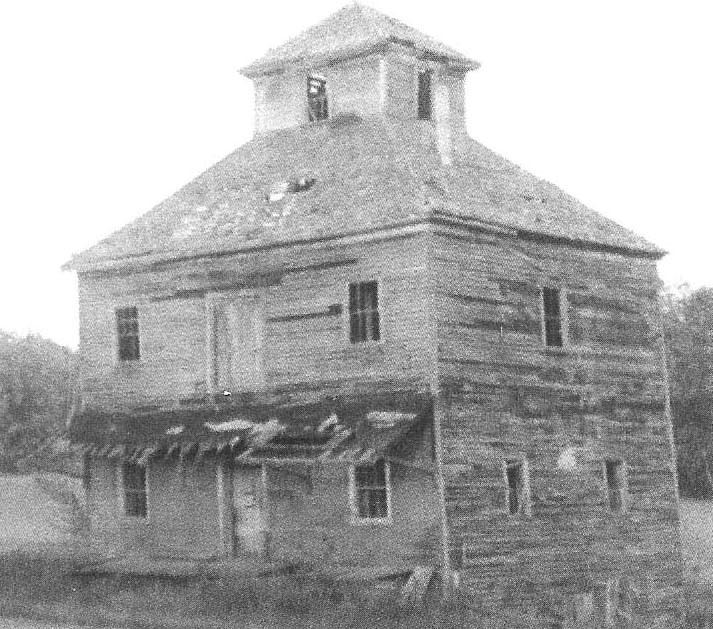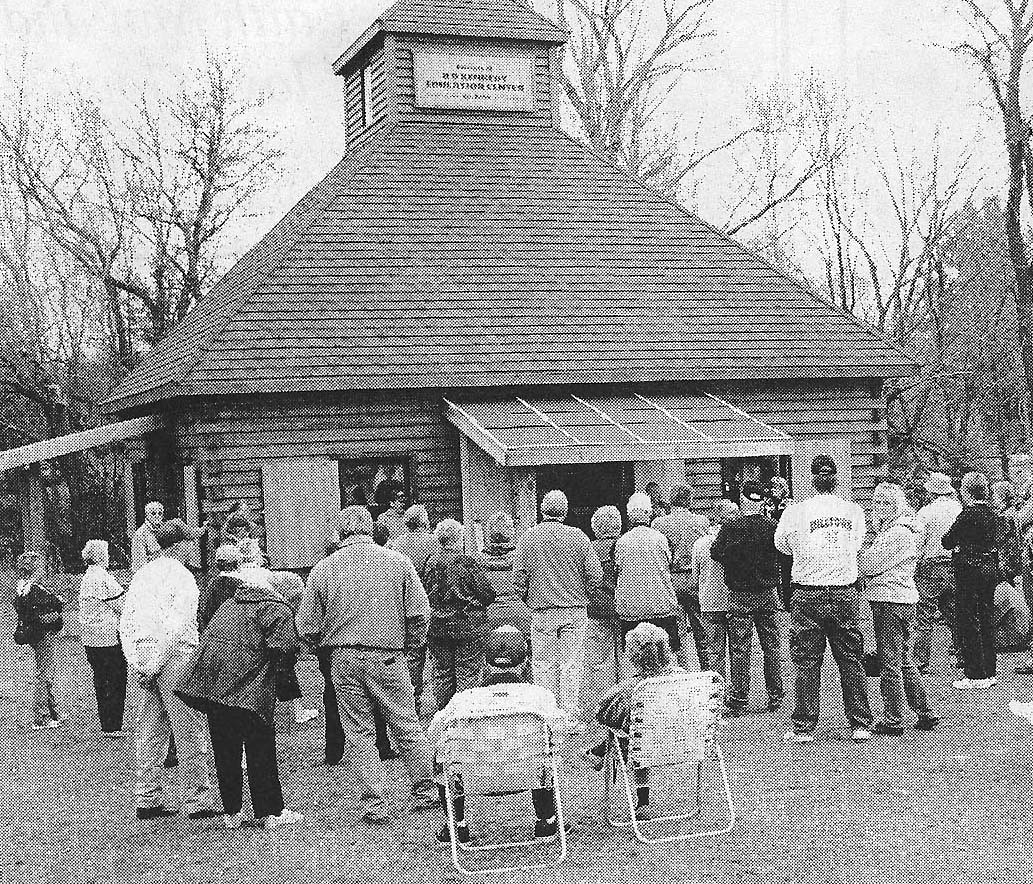
Deteriorated Kennedy Mill – 1970’s
.

Dedication 2007
The D.D. Kennedy
Environmental Area consists of 106 acres of open prairies and abundant
woodlands along the waters of the
In 1914 D.D. (Dougald Duncan)
Kennedy became owner and rebuilt the wooden dam with concrete. The saw mill
operated three to four weeks in the spring when the river was high for water
power; after the sawing season, it became a grist mill for livestock feed.
Kennedy installed a small water wheel in 1926 which supplied electricity for
the farm until 1960. Kennedy was an active community organizer and served three
terms in the Wisconsin Legislature as Assemblyman.
After Kennedy’s death in
1941, his widow Violet continued to operate the grist mill and farm including a
dairy with assistance of hired help until 1965. Violet’s brothers built her a
new house closer to the mill pond in 1952.
On August 14, 1973, the Polk
County Board of Supervisors accepted Violet Kennedy’s gift of 100 acres for a
park and recreation area. Violet and D.D. both loved the place and felt the
public should also enjoy it.
Little was done with the
property between 1973 and 1990 when new leadership took over and non-profit
organizations and individuals formed the FRIENDS
OF THE D.D. KENNEDY, led by Darrell and Rosalie Kittleson. The Sportsman’s Club, Boy and Girl
Scouts, 4-H clubs, financial institutions, University Extension, school, and
community had representatives on the Board of Directors who drew up a
constitution and established committees to implement the plan for the
Wildflowers and native
species were seeded, prairie grass was restored. Picnic facilities, a pump,
restrooms, and a parking lot were installed with donated funds, including a
substantial grant from the Bremer Foundation.
A major project was the 98
foot bridge over the Balsam Branch built by the 327th Engineer
Reserves Company in 1992. Trails were constructed and blacktopped by the Polk
County Parks Department that same year.
Dedication of the Park took
place June 13, 1993, featuring ribbon cutting and speeches by Polk county
officials and Mrs. Kennedy. In 1994 the bike trail system from Amery and
Violet Kennedy celebrated her
95th birthday on September 1, 1998, at the Park. She passed away
early 1999. Her dream had been fulfilled in her lifetime.
The disastrous damage done in
April, 2001 by the unusually large amount of rainfall eroding a section of the
dam, washing the pier downstream, damaging the walkways and other areas was the
stimulus of a new phase at the Park. After discussing dam replacement, it was
decided by the
An
The Land, Air, Soil, and
History (LASH) program, a combined effort of the
This history was taken from
work of Marge Hallquist, friend of the family and park

Deteriorated Kennedy Mill – 1970’s
.

Dedication 2007